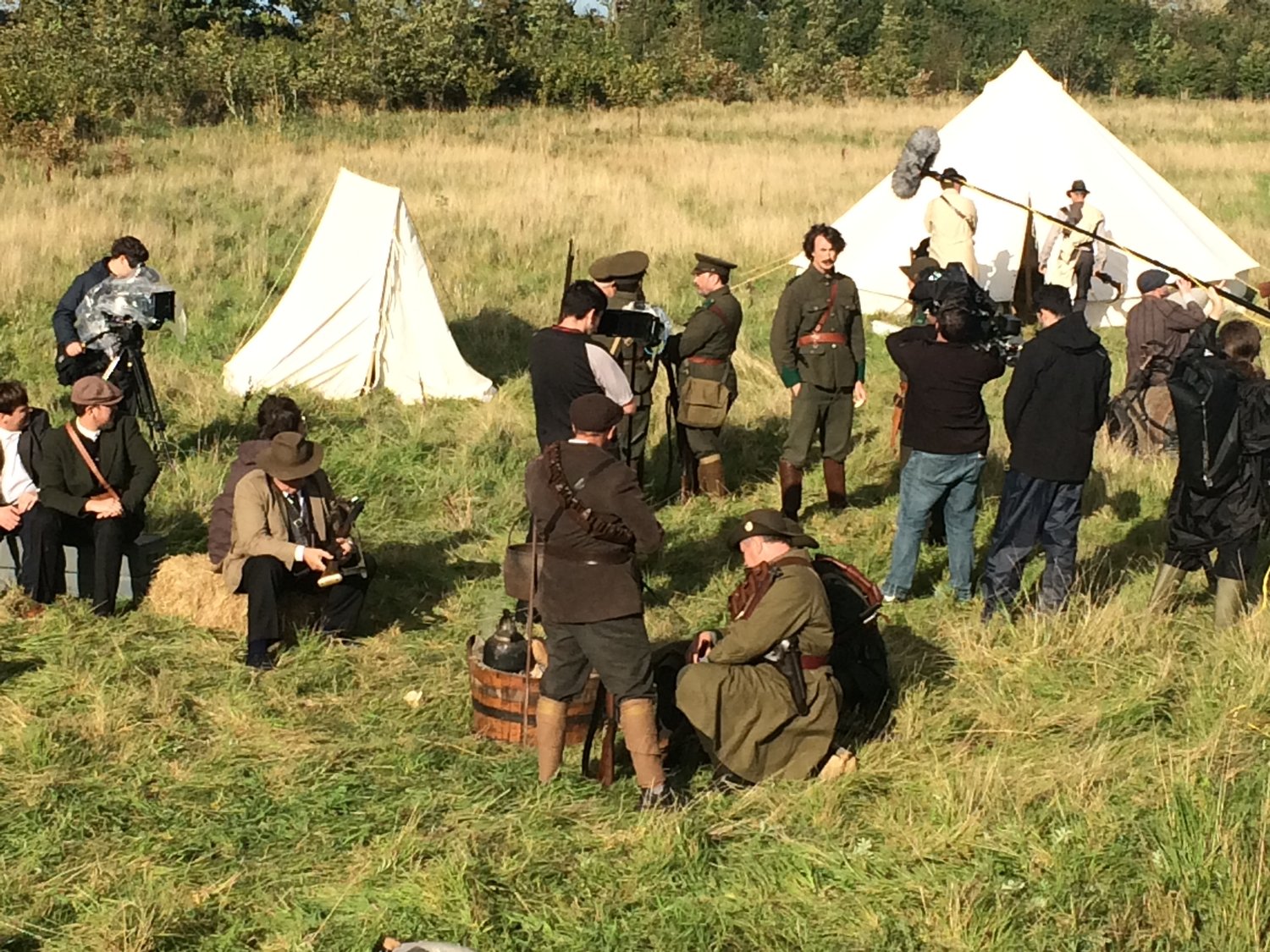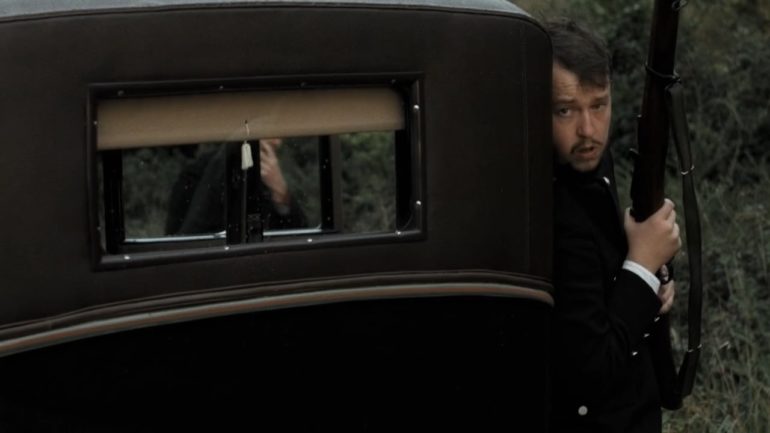Colin Farrell of Tile Media talks to Scannain about how he got into historical documentary making with his family. And about the making of Fingal’s Finest, the remarkable story of the men of the Fifth Battalion in North County Dublin, who in the 1916 Rising were the only squad to be victorious in their battle on Easter Monday in Dublin, which recently screened at the Fingal Film Festival. The Fifth Battalion were lead by Irish martyr Thomas Ashe who died on hunger strike in 1917, one hundred years ago.
Q: How did you set up the film company to make Fingal’s Finest?
Myself and my dad (Dave) and my brother all got into it in around 2000. I got straight out of college to do a film production course in Cholaiste Dhulaigh. My brother had done journalism and then went into history and politics, then also went back to do film, while in the meantime my dad got connected to Steven Ruck of Tile Films, who were doing historical documentary.
At the same time I was doing location management for bigger projects coming over here. The Tudors, King Arthur, Penny Dreadful…things like that.
Q: How did you get into location management?
I worked back and forth with Tile Films doing lots of different things, like assistant cameraman and I got chatting with Mick O’Rourke, who was the first cameraman I worked with. He got me connected with the crew from King Arthur. I kind of fell into location management on King Arthur. It was unbelievable, in terms of the scale of it, it was massive. I continued to do location management until three or four years ago.
Q: Just out of interest did you scout the London settings in Dublin for Penny Dreadful ?
Yeah, all of it was shot in Dublin and I would have scouted a lot of it. It was a great buzz. I loved Penny Dreadful. The final scene of the whole series actually takes place in Boland Mills. I scouted that. With location it’s a bit of detective work.

Q: So how did the 1916 Rising film come about?
My brother and my dad started looking into making a film about the 1916 Rising about eight or nine years ago. They wanted to do something different to what had been done before, where films concentrated on the leaders, Pearse and Connolly, or the GPO and not on the civilians or the British who had signed up for WW1 and ended up in Dublin. They got funding from TG4. In 2004, myself and my da had decided to start our own production company, connected to Tile Media. We were looking to do something a little bit different.
As for Fingal’s Finest, we chose to do talking heads, from the foot soldiers point of view. The actors we chose when we auditioned them, we felt, we could tell that the individual stories resonated with them.
Q: How did you pick Brendan Sheehan, who does a terrific job as Thomas Ashe?
With Brendan he was the last key character we cast. With him the look was really, really important. Ashe had a very distinctive look, he had the mad hair, and the stature. Ashe was very tall and athletic…he played hurling, you know.
Q: He had a kind of warrior look?
He did – a kind of Celtic Warrior. We told Brendan we were going to script key scenes, but you are going to have to a-dlib a lot. There’s going to be a lot of action, and no real rehearsal. Are you willing to throw yourself into it?
I threw a few random lines at him, and he stood up like Thomas Ashe, he looked right, shoulders back and he is delivering these lines, “Come out from behind those barracks in the name of the Irish Republic” and he jumps up and he’s going, “Bang! Bang!” and he’s directing the men…”You over there”. He really wanted to play the part and he showed us he really wanted to. He was very spontaneous. We knew straight away this was our Thomas Ashe.
Fingal’s Finest will be screened this Friday September 29th – The Thomas Ashe 100th Commemoration at Dublin City Hall, Dublin 2, Ireland.

